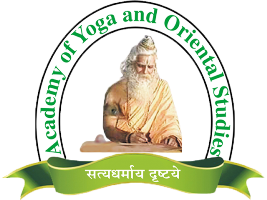
Welcome to "News Section " of AYOS
Year (May 2014-April 2015)
|
NATIONAL CONFERENCE ON UPANISADIC LITERATURE OF THE VEDAS
13.3.2015
AYOS Organises Monthly Lecture (99th)
on "Panini and His Legacy-2"
14.2.2015
4.2.2015
AYOS celebrates Saraswati Puja.
AYOS organised Monthly Lecture (97th)on "Meditationa and Neuroscience"
8.12.2014
AYOS organised Monthly Lecture (96th)on "AIDS and Indian Culture"
8.11.2014
AYOS organised Monthly Lecture (95th) on THE DOCTRINE OF SANAKARACHARYA
11.10.2014
AYOS organised Monthly Lecture (94th) on “FOOD AND EATING HABIT: INDIAN CONCEPT”
13.9.2014
AYOS organised Monthly Lecture (93rd) on "Yogic Perspectives in Kalidasa's Literature"
29.8.2014
AYOS celebrates Ganesh Puja.
AYOS organised Monthly Lecture (92nd) on "Mahabharata War and the Advent of Kali Era"
12.7.2014
AYOS organised Monthly Lecture (91st) on "Geography and Mathematics in Puranas"
14.6.2014
AYOS organised Monthly Lecture (90th) on "Ancient Indian Culture and Education"
10.5.2014
AYOS organised Monthly Lecture (89th) on "Philosophical Implications in Kalidasa's Literature"
|